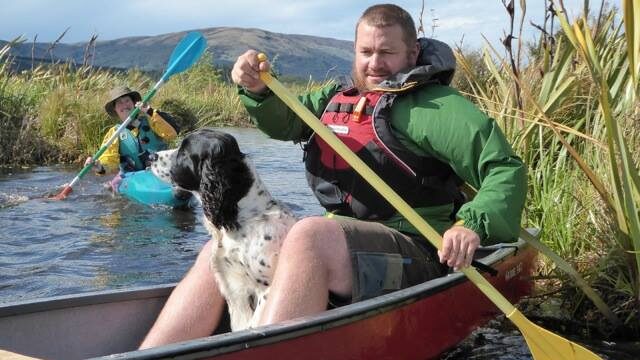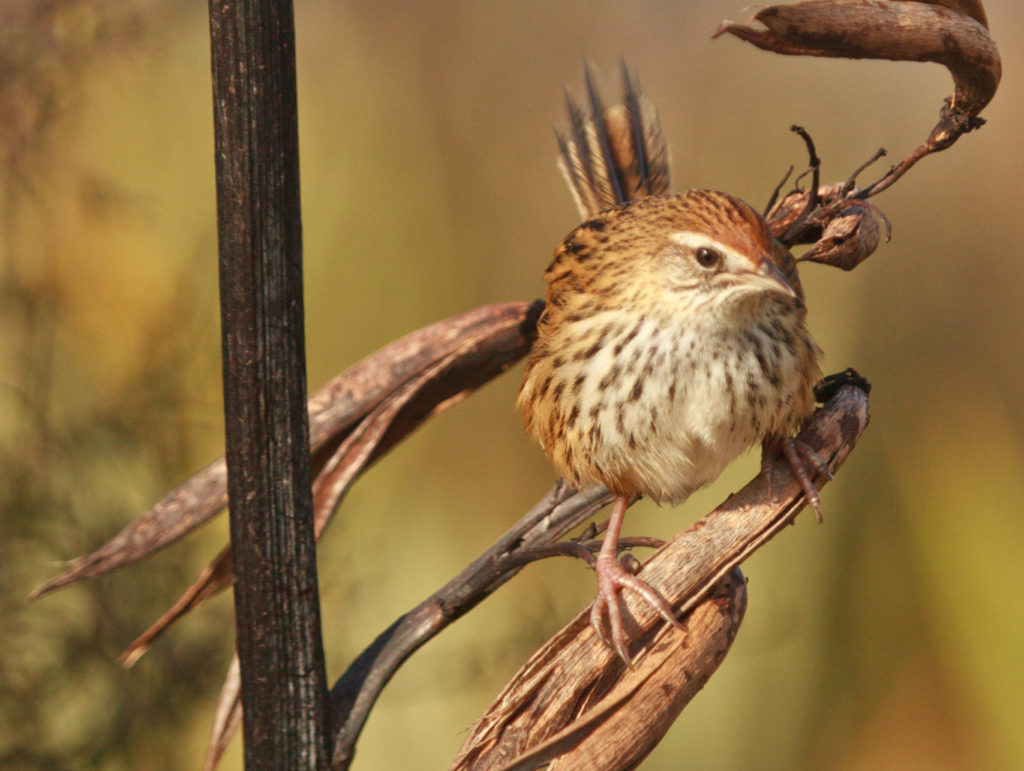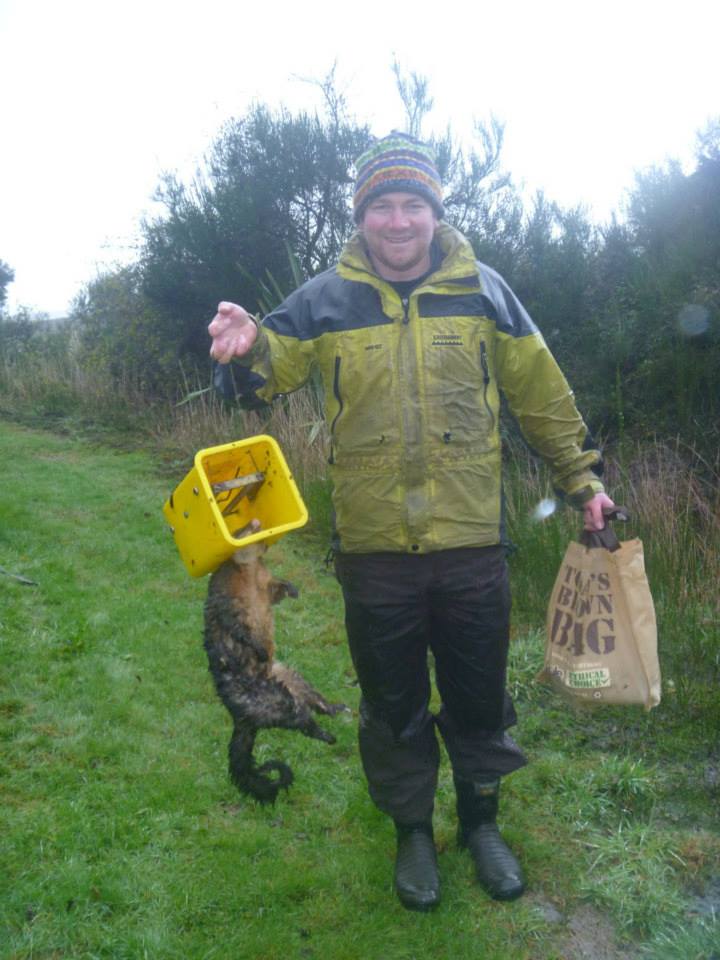Glen Riley, coordinator at Te Nohoaka o Tukiauau, Sinclair Wetlands, 40km south of Dunedin, has been talking with some members of the Ornithological Society recently. According to the ornithologists, spotless crake were seen at the wetlands 30 years ago, but have been rare ever since.

That may have changed. Glen says crakes have been heard calling several times in the last few months– and things are looking up for the fernbirds too. Fernbirds are an indicator species for wetlands. When there’s good predator control they do well, but when predators are around, they’re the first species to be lost. That’s because they’re poor fliers. They prefer to scramble through dense undergrowth.
When fernbirds do occasionally take to the air, they only fly short distances with their long tail hanging down, just above the vegetation. So they’re an easy catch. What’s more, they have a distinctive gamey smell which makes them very vulnerable to introduced mammalian predators. Lately though, it’s the predator numbers that have been declining at Sinclair Wetlands and the fernbirds are soaring.

When Glen Riley first moved to the wetlands as coordinator in 2013 he’d never seen a fernbird, even though he’d previously been involved in conservation work around other parts of Otago. Working and living onsite, he began to see them occasionally. Now – three years on – Glen’s trapping programme is paying huge dividends for the fernbirds. The iconic wetland bird with its distinctive tatty tail is everywhere in the wetlands. Glen says there are so many fernbirds at the swamp nowadays that they’re spreading out on to drier, higher surrounding land.
For the first two years Glen’s trapping numbers were fairly constant but last year the numbers of predators caught was roughly halved across all species. Stoats are the wetland’s biggest predator problem. There were only 9 stoats caught in 2015 compared to 17 in 2014. Other predators caught were: ferrets 2 (7 in 2014), weasels 3 (8), possums 12 (20), cats 0 (4) and hedgehogs 7 (9).

There are very few rats in the wetlands, but tracking tunnels have confirmed that there are lots of mice. The mice themselves are the least of Glen’s worries. They’re probably not a significant issue to the local wildlife – but they are the likely explanation for the unusual frequency of weasels in his early traps. Weasels are the smallest of the mustelids and the smallest carnivores in the world. Because of its size, a weasel must eat a third of its own weight daily and will enter burrows to take prey several times larger than itself. It kills with a fatal bite to the neck – and its favourite food is mice.
Weasels were originally introduced to New Zealand in bigger numbers than stoats, but unlike their larger cousins, weasels haven’t thrived here. When Glen first started trapping at the wetlands, however, weasels were the first thing he caught. There were a lot of possums too at first, but numbers are now down thanks to the trapping and it’s mostly a matter of catching the odd possum that moves in to the area.
Glen does all the trapping himself, but has a growing army of volunteers who help with planting and weeding in ongoing habitat restoration work. A total of 5064 natives were planted at Sinclair Wetlands in 2015, representing a contribution of 3495.5 volunteer hours.
Te Nohoaka o Tukiauau, Sinclair Wetlands, covers an area of 315 ha and at one time was drained and converted to farmland. In 1960 it was purchased by the late Horrie Sinclair who retired the land from farming, stopped pumping out the water and began the wetland restoration. He gifted the land to Ducks Unlimited and in 1986 a Queen Elizabeth II National Trust open space covenant was registered.

In 1998 the wetland was returned to Ngāi Tahu as part of the treaty settlement and it is now owned by Te Rūnanga o Ngāi Tahu and managed by a charitable trust. It is a significant site for mahinga kai – traditional food and resources – and one of the wetland’s islands was once the site of a Maori pa. Over 60 species of birds are known to live there and it is regarded as New Zealand’s largest and most significant wetland in private ownership.
With over 90% of New Zealand’s wetlands lost in just 150 years of European settlement, Te Nohoaka o Tukiauau is a special place that perhaps deserves to be better known. Its name acknowledges ‘the dwelling place of Tukiauau’ an early Ngati Mamoe chief. There are 3km of walking tracks and it is open to the public in daylight hours. A donation by visitors is appreciated. If you do visit, keep an eye out (and an ear open) for a spotless crake or fernbird. Both are said to be shy and more often heard than seen. But fernbirds are curious and if you click a couple of stones together, or try to copy their high-pitched call, they may just pop into view to check you out.

